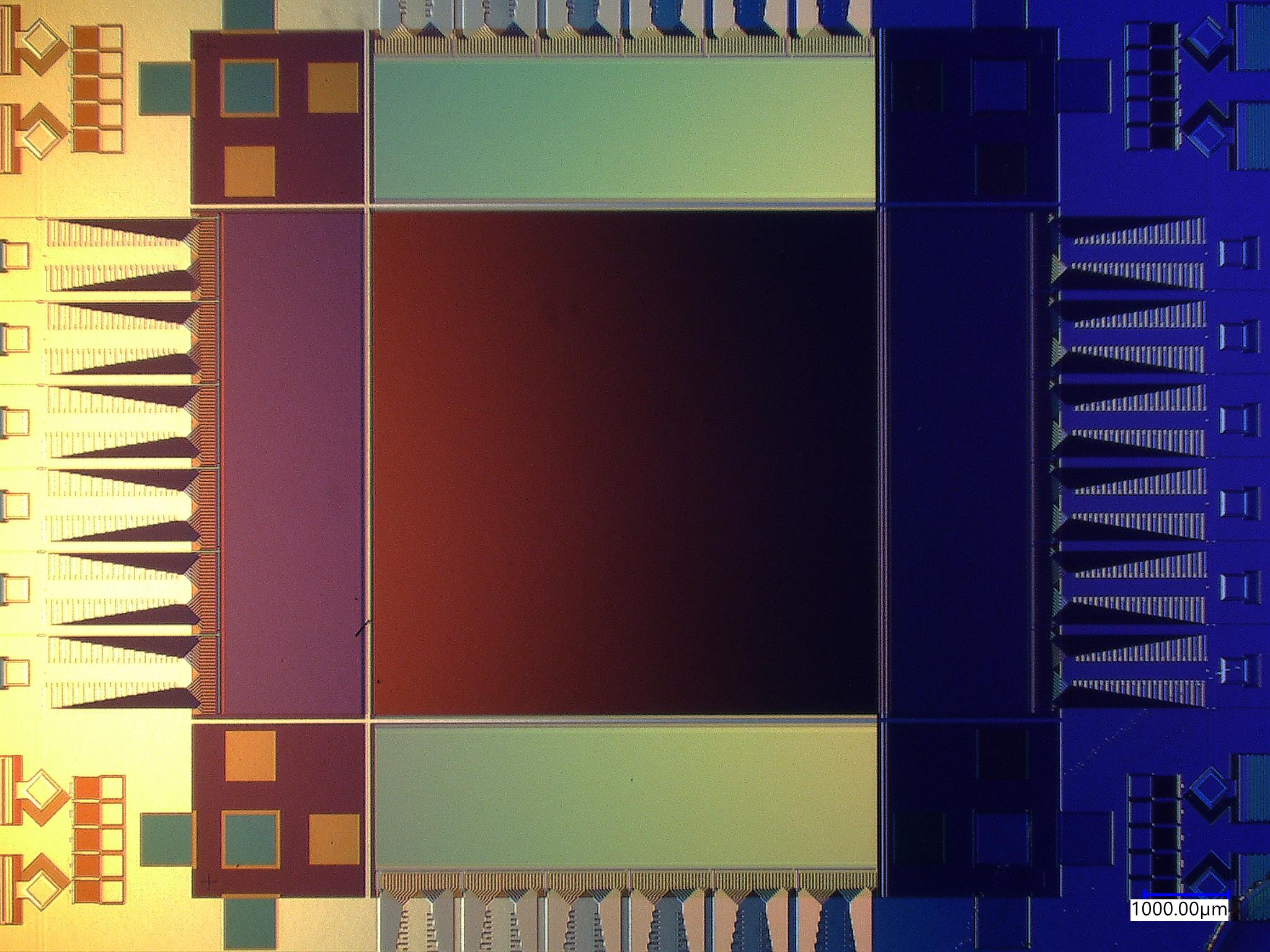EDWARDS, Calif. – NASA’s Dryden Flight Research Center at Edwards Air Force Base, Calif., continued its support of NASA’s four mission areas during 2011, helping to advance the agency’s overall mission of Earth and space science and aerospace technology research.
Science
SOFIA Observatory
The Stratospheric Observatory for Infrared Astronomy (SOFIA), an international collaboration between NASA and the German Aerospace Center, had a busy year, starting with the flight of the GREAT Spectrometer in April. GREAT, for German Receiver for Astronomy at Terahertz frequencies, is a high-resolution far-infrared spectrometer that finely divides and sorts light into component colors for detailed analysis.
On June 23, the SOFIA observed the dwarf planet Pluto as it passed in front of a distant star. This event, known as an occultation, allowed scientific analysis of Pluto and its atmosphere by flying SOFIA to an exact location where Pluto’s shadow fell on Earth at the right moment. This was the first demonstration in practice of one of SOFIA’s major design capabilities.
NASA selected the first six teachers to work with scientists aboard SOFIA during research flights in May and June as part of the SOFIA’s Airborne Astronomy Ambassadors program.
Operation IceBridge
NASA’s DC-8 flying laboratory and a team of scientists completed their third year of Operation Ice Bridge flights in October and November, surveying and mapping glaciers and the thickness of sea ice and ice sheets on Antarctica. The aircraft flew more than 307 flight hours on 31 data collection and transit flights from a staging base at Punta Arena, Chile, during the six-week Ice Bridge campaign, most of more than 11 hours duration.
WISPAR science campaign
A NASA Global Hawk aircraft was the centerpiece of the Winter Storms and Pacific Atmospheric Rivers, or WISPAR, field campaign last winter. Three long-duration flights over the Pacific Ocean explored atmospheric rivers, arctic weather, and collected targeted observations designed to improve operational weather forecasts. The NOAA-led WISPAR airborne campaign focused on improving scientists’ understanding of how atmospheric rivers form and behave and evaluating the operational use of unmanned, high-altitude aircraft for investigating these phenomena, which could aid NOAA in future weather predictions.
In early November, one of NASA Dryden’s Global Hawk airborne science aircraft flew the 50th flight of a NASA Global Hawk, a 16-hour mission in preparation for the Airborne Tropical Tropopause Experiment, or ATTREX, campaign slated for 2013-2014.
ER-2 Midwestern Wind, Rainfall Study
One of NASA Dryden’s high-altitude ER-2 aircraft deployed to Offutt Air Force Base, Neb., last spring for a six-week study in support of the future Global Precipitation Measurement, or GPM, satellite mission planned for 2013. Acting as a satellite simulator, the ER-2 carried instruments that sampled the entire column of atmosphere below the aircraft to verify that the data collected produced a consistent summary of precipitation physics and improved the accuracy of future satellite instruments.
G-III Hawaii / Alaska Volcanic Imaging Missions
NASA Dryden’s Gulfstream-III science aircraft conducted two volcano imaging missions during the year, one to Hawaii in the spring and a second to Alaska in early August. Using the Uninhabited Aerial Vehicle Synthetic Aperture Radar, or UAVSAR, developed by NASA’s Jet Propulsion Laboratory, the first mission imaged volcanoes on Hawaii’s Big Island and mapped surface deformations on the islands of Oahu, Molokai and Maui during seven flights.
On the G-III’s second volcano mission, the UAVSAR imaged volcanoes in the Aleutian Island chain to detect and measure small changes in the Earth’s surface of geophysical interest. It also imaged volcanoes in the Cascade Range over Washington, Oregon and California while en route to its home base in Palmdale, Calif.
Aeronautics
Sonic Boom Research
NASA Dryden used supersonic aircraft to produce super-loud sonic booms over a remote part of the Mojave Desert in an effort to understand how to minimize their startling impact. The project, called SCAMP for Superboom Caustic Analysis and Measurement Program, collected data to validate computer prediction tools that can be used in the design of future quieter supersonic aircraft.
The Waveforms and Sonic boom Perception and Response, or WSPR, project gathered data from a select group of volunteer Edwards Air Force Base residents on their individual perceptions of sonic booms produced by aircraft in supersonic flight over Edwards. WSPR’s primary purpose was to develop data collection methods and test protocols for future public perception studies in communities that do not usually experience sonic booms. Their reactions to low-noise booms will be a valuable guide for future work in sonic boom perception and response.
In January, NASA Dryden and Seismic Warning Systems, Inc., began evaluating the company’s QuakeGuard™ earthquake warning system to determine if sonic booms caused the devices to register false alarms. Under a NASA Space Act agreement, the company installed two of their QuakeGuard™ warning seismometers at NASA Dryden, and the center tested the system during three flights with F/A-18 aircraft diving to place sonic boom shockwaves directly on the building.
Channeled Center-body Inlet Experiment
A primary research objective of this experiment was to define the airflow through an experimental jet engine inlet, then compare it to the airflow through a standard inlet. Six flights at speeds of to Mach 1.74 were flown with two interchangeable center bodies installed in an air inlet tube to measure airflow around them. Both structures are designed to direct and compress airflow internally through the engine. Flight data from the standard smooth center body will be used to benchmark performance data for the channeled center body.
DROID
A large hobby-type radio-controlled model aircraft was transformed into a high-tech flight research aircraft and is being used to develop a ground collision avoidance application for smart phones that can be used by general aviation aircraft. The Dryden Remotely Operated Integrated Drone, or DROID, is the newest – and smallest – member of NASA Dryden’s flight research aircraft stable. The Automatic Collision Avoidance Technology Ground Collision Avoidance System software is being adapted to demonstrate that even the simplest flight systems may benefit from Auto-GCAS technology.
Biofuel Fuel Emissions Test
Renewable biofuel made from chicken and beef tallow was tested in one of the four engines of NASA’s DC-8 flying laboratory during ground tests last spring. The Alternative Aviation Fuels Experiment, or AAFEX, enabled aeronautics researchers to measure the fuel’s performance in the engine and examined the engine exhaust for chemicals and contamination that could contribute to air pollution. It was the first time that biofuel emissions had been measured for nitrogen oxides, commonly known as NOx, and tiny particles of soot or unburned hydrocarbons – both of which can degrade air quality.
Spaceflight
Space Shuttle Support
Dryden celebrated almost 40 years of support of NASA’s space shuttle development and operations when shuttle flights concluded in July. The office provided management and coordination of facilities, systems, and ground servicing equipment in support of space shuttle launch, on-orbit, landing, recovery, and turnaround operations. During the more than 30-year program, 54 shuttle landings occurred at Edwards, beginning with STS-1 on April 14, 1981, and ending with STS-128 on September 11, 2009. Dryden’s Shuttle and Flight Operations Support Office began shut down activities in 2011 following the last shuttle mission, and is now engaged in disposition of specialized shuttle support equipment, a process expected to take at least two years.
Flight Opportunities Program
NASA’s Flight Opportunities program, managed by NASA Dryden, selected seven companies in August to integrate and fly a variety of technology payloads on commercial suborbital reusable vehicles near the boundary of space to help meet the agency’s research and technology needs. These two-year contracts, worth a combined total of $10 million, will allow NASA to draw from a pool of commercial space companies to deliver payload integration and flight services.
Mars Rover Landing Radar Tests
NASA Dryden and the Jet Propulsion Laboratory flight-tested the Mars Science Laboratory’s landing radar, using an F/A-18 aircraft. The aircraft carried a Quick Test Experimental Pod underneath its left wing that housed the MSL test radar.
The F/A-18 made a series of subsonic, stair-step dives over Rogers Dry Lake at angles of 40 to 90 degrees in order to simulate what the MSL’s radar will see during entry into the Martian atmosphere. Data collected by these flights were used to finesse the MSL’s landing radar software to help ensure that it was calibrated as accurately as possible.
In other highlights of the year,
-
Retired NASA astronaut Fred Haise returned to NASA Dryden Aug. 11 to share recollections of his time as a research pilot at the center in the 1960s and to participate in ceremonies honoring him at the Lancaster Jethawks baseball team’s annual Aerospace Appreciation Night in nearby Lancaster, Calif., Aug. 13.
-
Members of the National Research Council’s Aeronautics and Space Engineering Board, including first man to walk on the moon, Neil Armstrong, toured NASA Dryden on April 20. The study team reviewed a number of aeronautics research projects, specialized aircraft and research facilities at NASA Dryden as part of their three-day visit.
-
In November, NASA Dryden awarded a $11.2 million contract to Comfort & Hays Electric, Inc. of Long Beach, Calif., for construction of a 38,000-square-foot Facilities Support Center at its main Edwards campus. The single-story building will provide office and technical spaces for Dryden’s Facilities Engineering and the Asset Management department as well as the Safety, Health and Environmental Office, combining in one structure functions that are currently performed in several obsolete and inefficient facilities on the Dryden campus.
-
The U.S. Air Force Research Laboratory’s Automatic Collision Avoidance Technology Fighter Risk Reduction Program team, which includes NASA Dryden, won an Aviation Week & Space Technology Laureate Award for its successful development and flight test of an Automatic Ground Collision Avoidance System. NASA Dryden led the project’s integrated test team that was responsible for the technical content of the project’s test and evaluation, maintenance of the Air Force’s F-16D test aircraft, project management and engineering services, and provision of the project’s chief pilot.
-
Boeing’s Phantom Ray, a fighter-size Unmanned Aircraft System, made a successful first flight on April 27 at Edwards Air Force Base. NASA Dryden hosted Phantom Ray flight test operations, providing hangar facilities, engineering and ground test support, as well as flight test range support for the project under a Boeing-funded commercial Space Act agreement with NASA.
- Boeing’s Phantom Eye, a hydrogen-powered, high-altitude, long-endurance demonstrator aircraft, arrived at Dryden in March. The unmanned aircraft underwent assembly and continues preparations for flight tests, expected to begin in 2012. As with the Phantom Ray, NASA Dryden is hosting the Boeing flight test operation, providing hangar facilities, engineering, ground test and test range support for the project.
For more about NASA Dryden Flight Research Center, visit:
Still and video imagery to support this release is available on-line at:
https://www.nasa.gov/centers/dryden/multimedia/
– end –
text-only version of this release
To receive status reports and news releases issued from the Dryden Newsroom electronically, send a blank e-mail message to dfrc-subscribe@newsletters.nasa.gov. To unsubscribe, send a blank e-mail message to dfrc-unsubscribe@newsletters.nasa.gov. The system will confirm your request via e-mail.
Gray Creech
NASA Dryden Flight Research Center
661-276-2662
gray.creech@nasa.gov


























